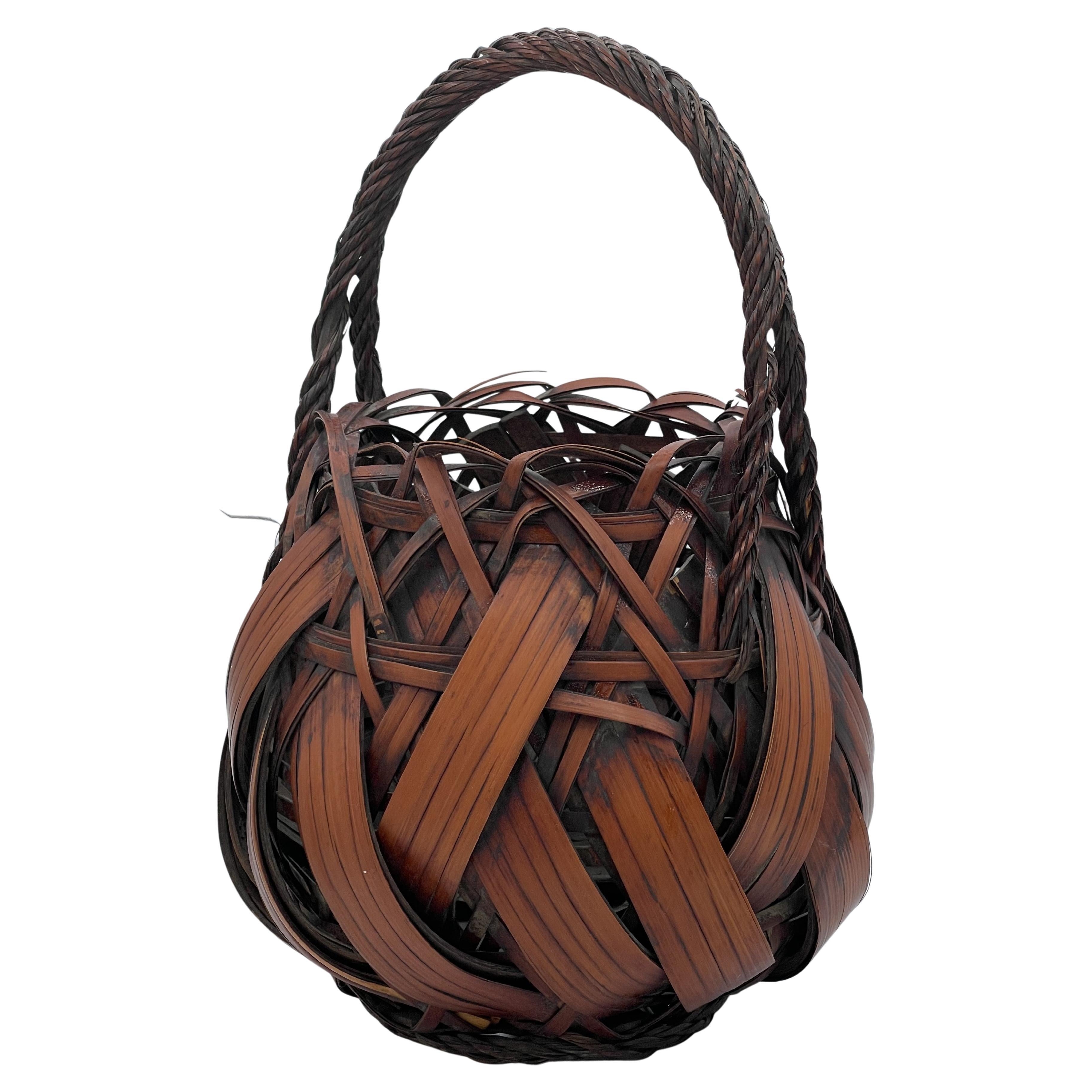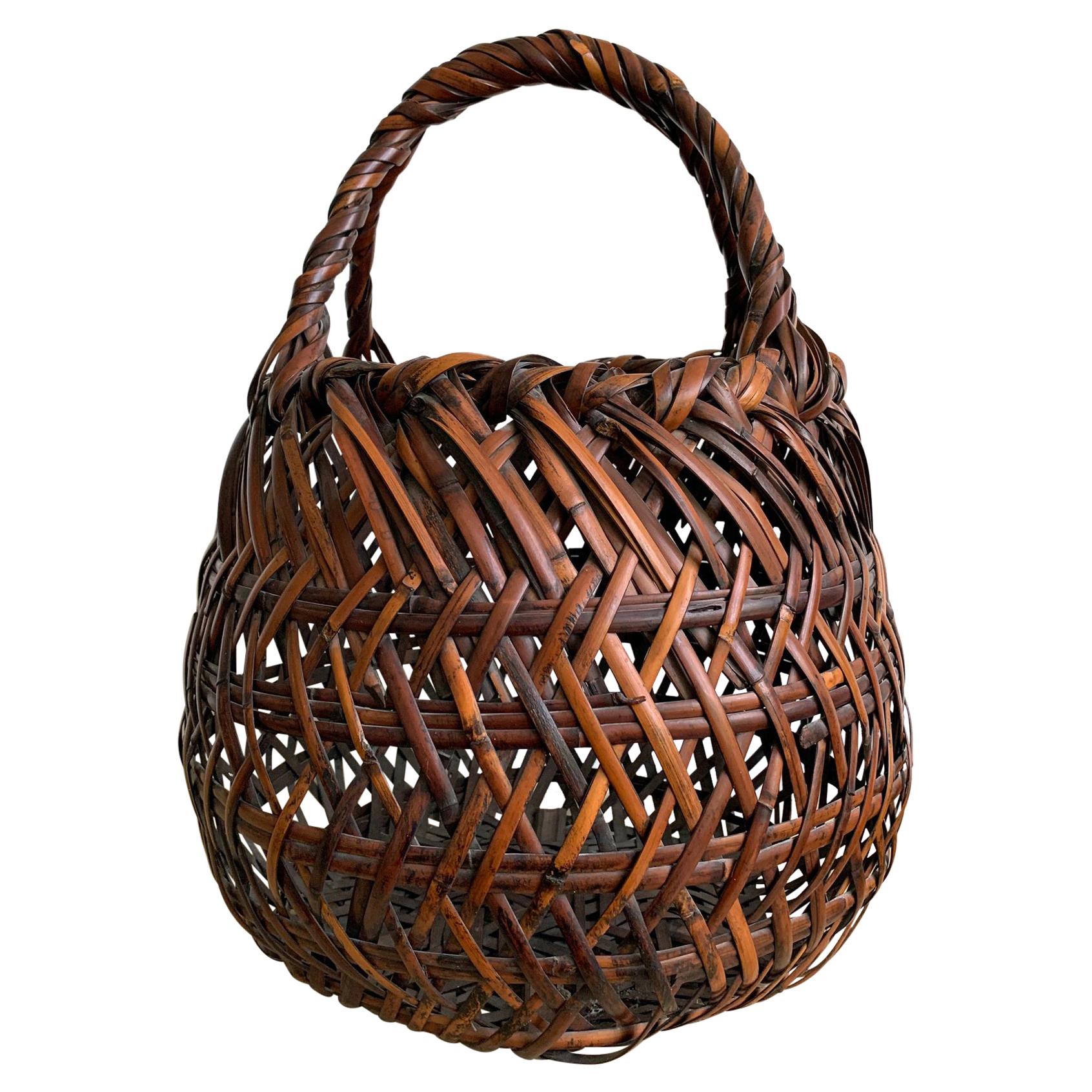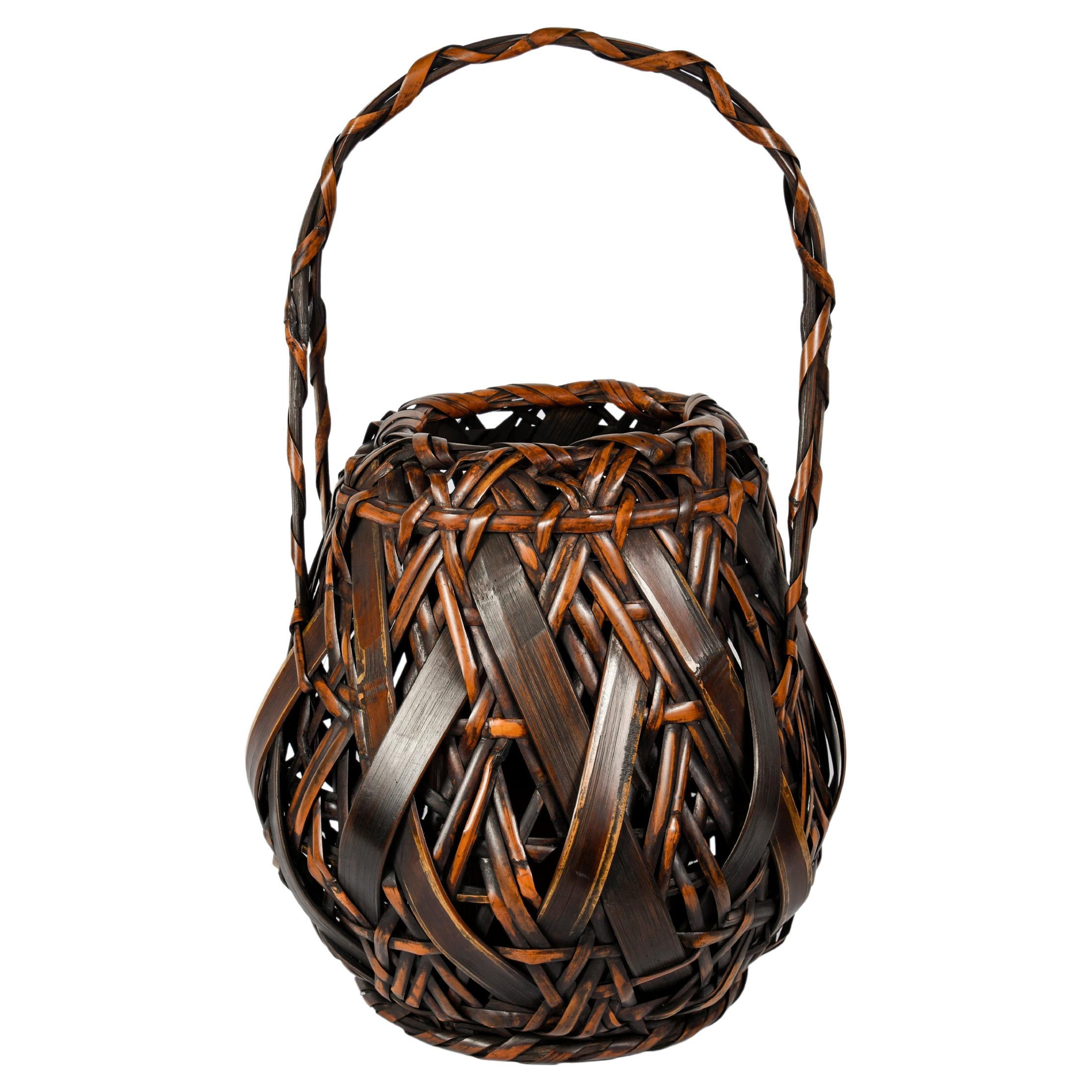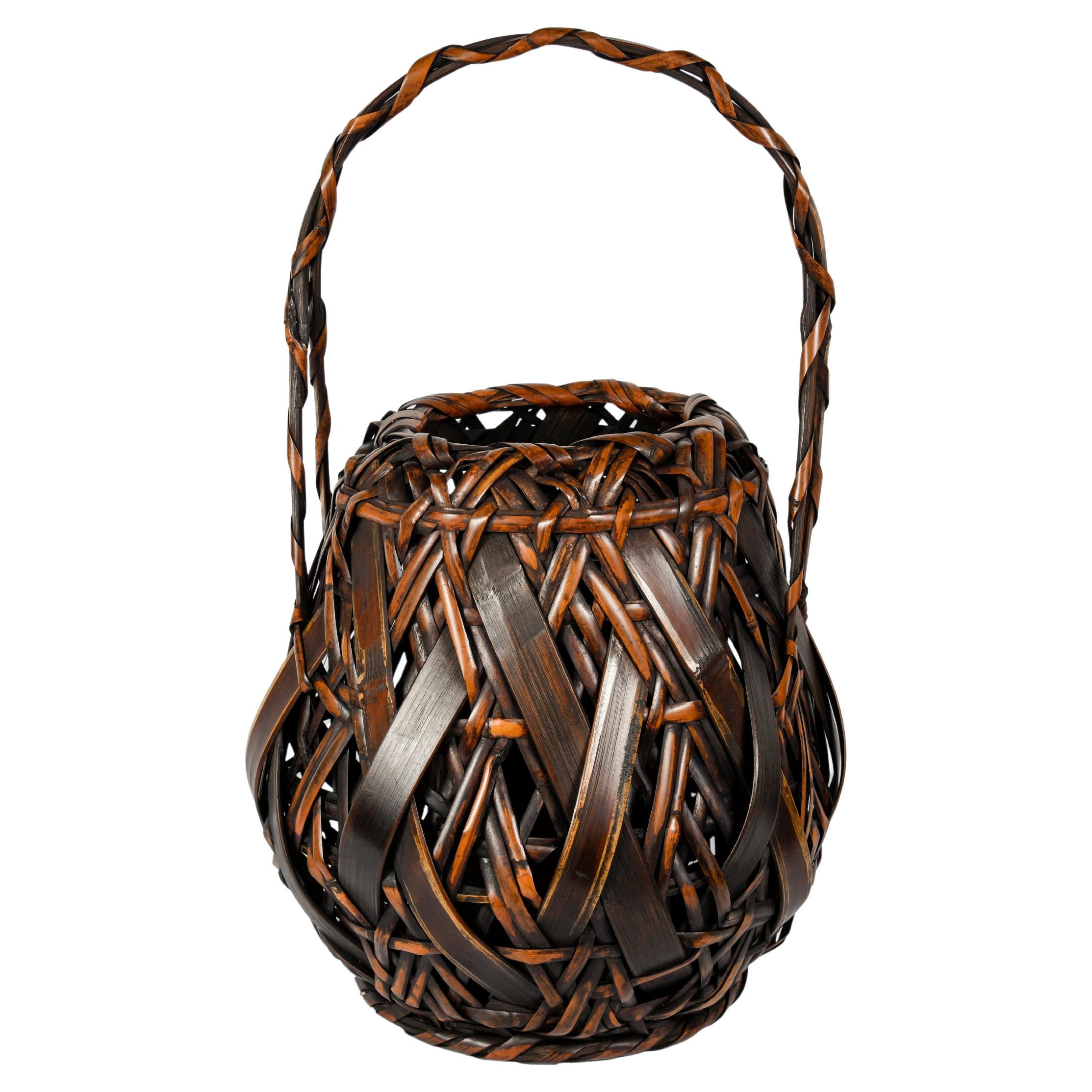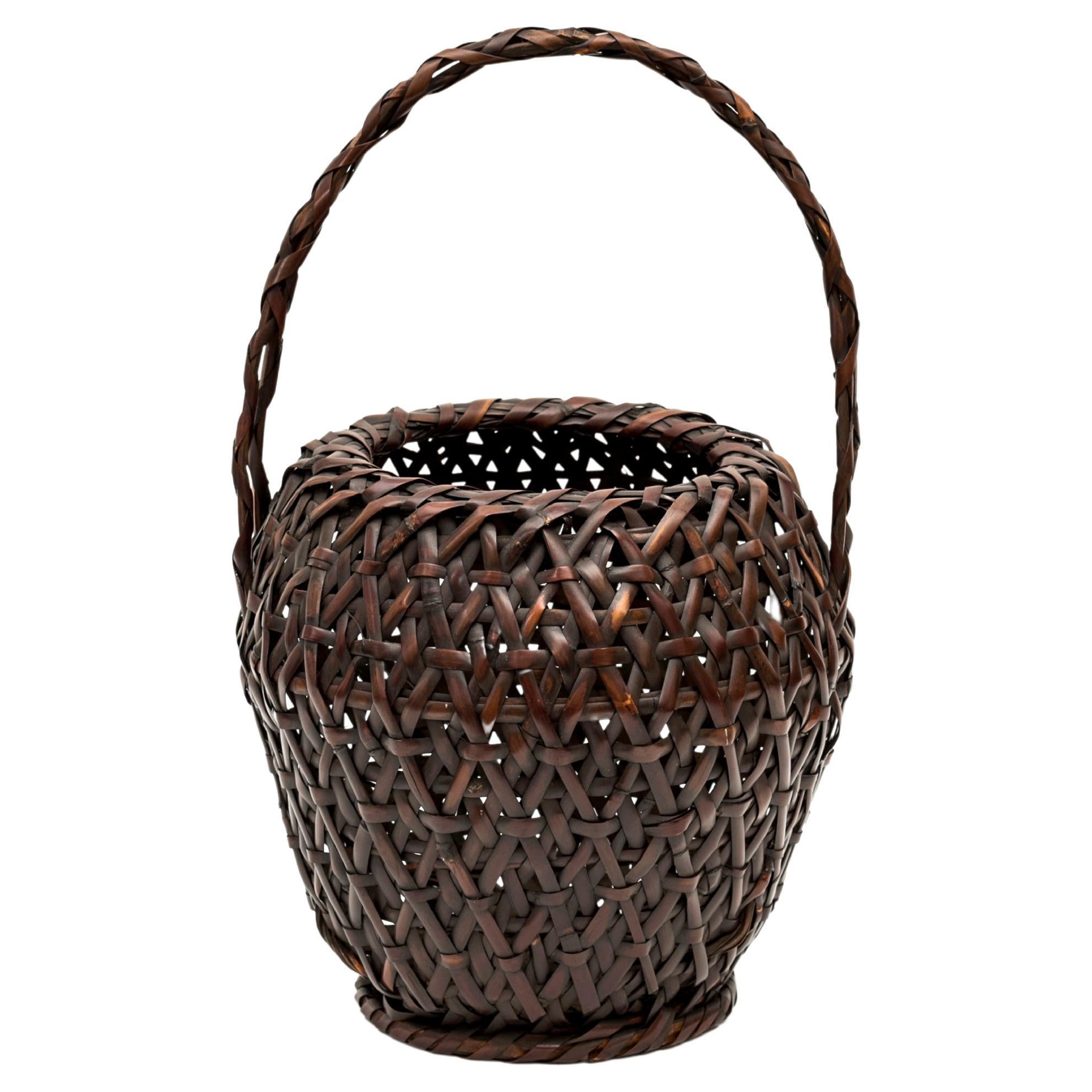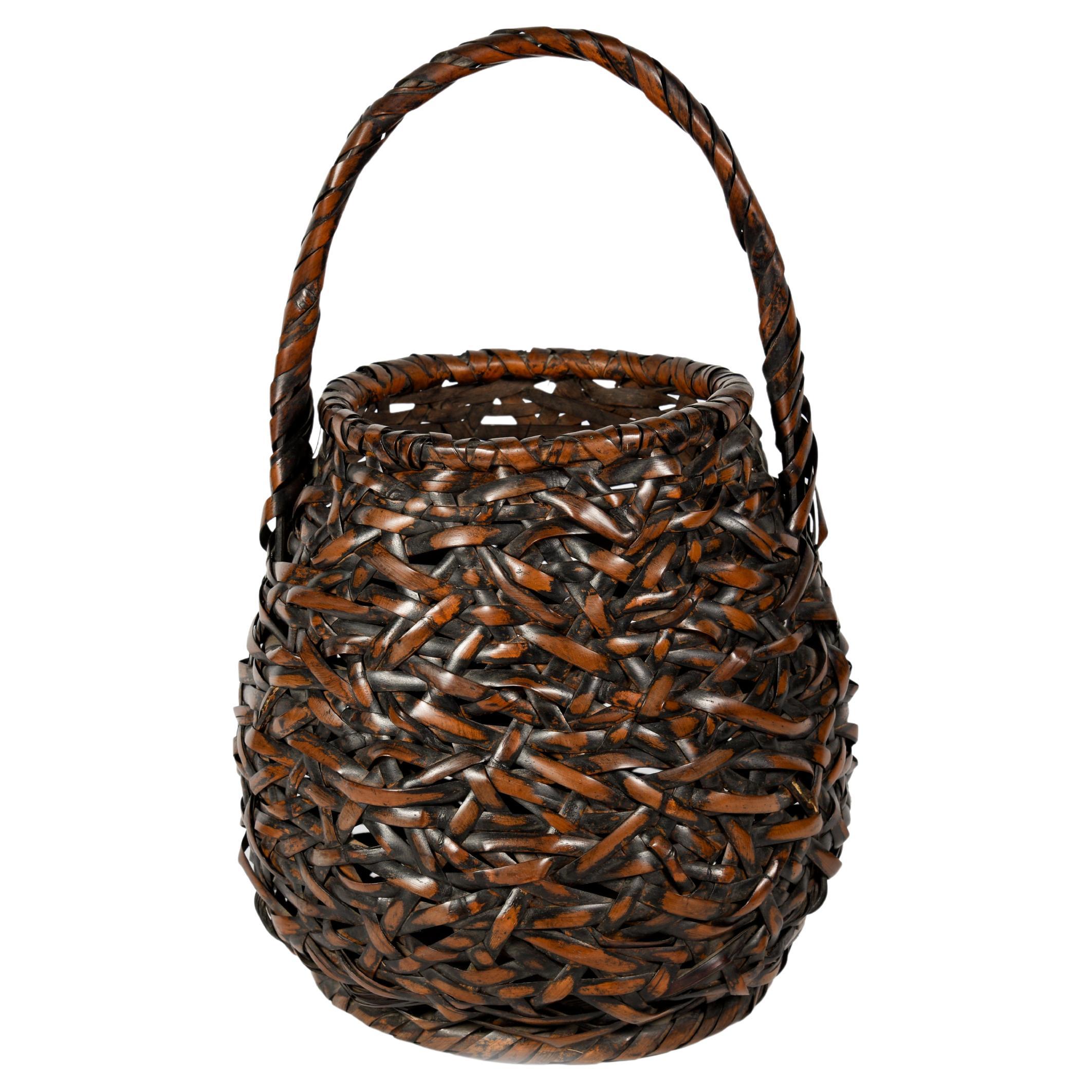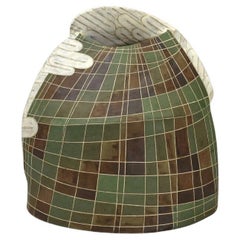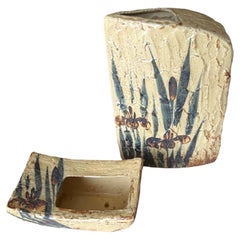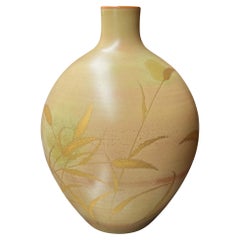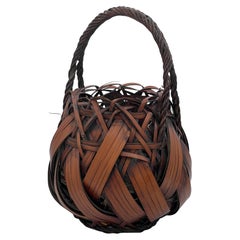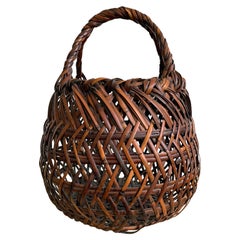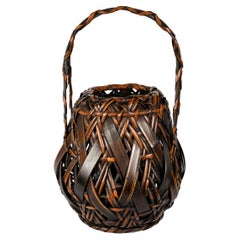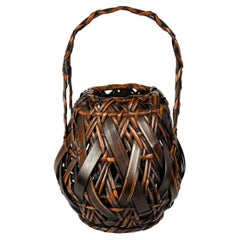Items Similar to Japan, Bamboo basket hanakago by Tanabe Chikuunsai II (1910-2000).
Want more images or videos?
Request additional images or videos from the seller
1 of 7
Japan, Bamboo basket hanakago by Tanabe Chikuunsai II (1910-2000).
$3,594.91
$4,493.6420% Off
£2,732.73
£3,415.9220% Off
€3,040
€3,80020% Off
CA$5,052.11
CA$6,315.1420% Off
A$5,493.45
A$6,866.8220% Off
CHF 2,894.51
CHF 3,618.1420% Off
MX$66,729.51
MX$83,411.8820% Off
NOK 36,389.87
NOK 45,487.3420% Off
SEK 34,112.57
SEK 42,640.7120% Off
DKK 23,268.80
DKK 29,08620% Off
About the Item
Japan, Bamboo basket hanakago by Tanabe Chikuunsai II (1910-2000).
Tanabe Chikuunsai II (1910-2000), based in Osaka and Sakai, was the son of Tanabe Chikuunsai I. He was the second member of the Tanabe dynasty to adopt the artist name Chikuunsai, which means "Bamboo Cloud". He inherited this name when he took over the Kaifu-nan-so studio in 1937, following the death of Chikuunsai I. He was among the first artists to sign their works.
In 1930, he became a member of the Naniwa Ranyukai group. The following year, he adopted the studio name Schochikuunsai and was accepted into the 12th Teiten, marking the start of many participations in the Teiten, Shin-Butten, and Niten exhibitions. In changing his style in 1937, he moved away from the somewhat heavy karamono baskets to more open designs like the light and delicate sukashi.
In 1952, he was honored with the Tokusen and Asakura awards at the 8th Nitten exhibition. In 1959, he won the Osaka Prefecture Arts Prize, and in 1981, the Japanese government promoted him to the fourth rank Zuiho-Sho. In 1991, he passed his studio name to his eldest son, who became Chikuunsai III and took the name Icchikusai.
Chikuunsai II remained active in the last years of his life, serving as an advisor for the Nitten exhibitions, and as a member of the Nihon Shin-kôgei Bijutsu Kyokai association and permanent director of the Osaka Kôgei Kyokai association.
This basket, dating from the period between 1937 and 1944, illustrates his ambition and commitment to perpetuating the family legacy in a very personal style. Made of aged hobichiku bamboo, it reveals a rustic aesthetic prized by the aesthetes of the time, particularly the followers of the "Way of Tea". A similar basket was sold by the Eocene Gallery in Kyoto. It was named "Mountain Road".
Dimensions : 31.5 x 27.5 x 28.5 cm.
- Creator:Tanabe Chikuunsai II 1 (Artist)
- Dimensions:Height: 12.41 in (31.5 cm)Width: 11.23 in (28.5 cm)Depth: 10.83 in (27.5 cm)
- Materials and Techniques:Bamboo,Hand-Woven
- Place of Origin:
- Period:
- Date of Manufacture:1940
- Condition:No box.
- Seller Location:PARIS, FR
- Reference Number:1stDibs: LU6491239636092
About the Seller
5.0
Recognized Seller
These prestigious sellers are industry leaders and represent the highest echelon for item quality and design.
Established in 1982
1stDibs seller since 2022
7 sales on 1stDibs
- ShippingRetrieving quote...Shipping from: PARIS, France
- Return Policy
Authenticity Guarantee
In the unlikely event there’s an issue with an item’s authenticity, contact us within 1 year for a full refund. DetailsMoney-Back Guarantee
If your item is not as described, is damaged in transit, or does not arrive, contact us within 7 days for a full refund. Details24-Hour Cancellation
You have a 24-hour grace period in which to reconsider your purchase, with no questions asked.Vetted Professional Sellers
Our world-class sellers must adhere to strict standards for service and quality, maintaining the integrity of our listings.Price-Match Guarantee
If you find that a seller listed the same item for a lower price elsewhere, we’ll match it.Trusted Global Delivery
Our best-in-class carrier network provides specialized shipping options worldwide, including custom delivery.More From This Seller
View AllJapan, Rare Vase by Kanzan Shinkai, born in 1912
Located in PARIS, FR
Vase by Kanzan Shinkai,born in 1912
This vase is a fine example of Kanzan Shinkai's work. It features an intricate design, with raised circular patterns, using contrasting colors suc...
Category
Mid-20th Century Japanese Vases
Materials
Ceramic
Vase « The Cloud » by Japanese artist Watanabe Nobuo
Located in PARIS, FR
This sculptural vase, titled “Nuage” unique piece, crafted around 1980, exemplifies the remarkable skill of Japanese ceramicist Watanabe Nobuo in slab construction and inlay techniqu...
Category
Late 20th Century Vases
Materials
Ceramic
Japan, Set of Two Japanese Vases for Flower Arrangement, Ikebana
Located in PARIS, FR
Rare ceramic set of hand made vases Japanese flower arrangements. Very attractive even without flowers.
Hand made, hand painted and signed by the ar...
Category
Mid-20th Century Japanese Vases
Materials
Ceramic
Japan, Porcelain vase by Inoue Haruo 1910- 1975
Located in PARIS, FR
This porcelain vase, created by Inoue Haruo, embodies the elegance and finesse of Kyoto ceramics. Its spherical shape softened by harmonious curves, is topped with a slightly flared ...
Category
Mid-20th Century Japanese Vases
Materials
Porcelain
Japan, Pair of Hokai boxes in lacquered wood, Edo period, 1829
Located in PARIS, FR
Japan, Pair of Hokai boxes in lacquered wood, Edo period, 1829
Japan, Rare Pair of Hokai boxes in lacquered wood, Edo period, dated Bunsei 12, 1829.
Hokai boxes are traditionally use...
Category
Antique 19th Century Japanese Chinoiserie Decorative Boxes
Materials
Lacquer
Box signed Katsutoshi Koku, Japan, Meiji period (1868-1912)
Located in PARIS, FR
Box signed Katsutoshi Koku, Japan, Meiji period (1868-1912)
Rectangular silver box bearing the Japanese junjin hallmark, signifying pure silver, made during the Meiji period (1868-1...
Category
Antique Late 19th Century Japanese Decorative Boxes
Materials
Silver
You May Also Like
Japanese Late Meiji Period (1868-1912) Woven Bamboo Basket, Early 20th Century
Located in New York, NY
Japanese Late Meiji Period (1868-1912) Woven Bamboo Basket, Early 20th Century
DIMENSIONS
Height: 14 inches
Diameter: 8.5 inches
ABOUT
A finely hand-woven Japanese bamboo basket fr...
Category
Early 20th Century Japanese Japonisme Decorative Baskets
Materials
Bamboo
Japanese Bamboo Ikebana Basket by Yamamoto Chikuryosai I Shoen
Located in Atlanta, GA
An important Japanese bamboo Ikebana basket by Yamamoto Chikuryosai I (also known as Chikuryusai I, Shoen after 1929) (1868-1945). Active in Osaka, Kansai region, he was advised by Wada Waichisai I. After 1929, he signed his work as Shoen (Shoen made this), such as this one.
This basket was made using "sooted" bamboo (susutake in Japanese). This bamboo materials was collected from traditional thatched-roof houses that had been exposed to decades of smoke from a hearth or cooking fire, therefore the basket displays a deep rich patina that is hard to attain by color-lacquering. The basket featured a large rounded barrel form with handle. The body was constructed with a twill plaiting variation of a more relaxed and loose weave. It allows the light coming through to render the piece a lighter sense. Parallel plaiting was used to reinforce the body with stripes of bamboo, while adding more visual constrict to a free spirited background. Twisted bamboo strips form rope-like handle and the top rim. It is signed "Shoen Made This" on the base. Two-piece water container made from bamboo trunk is retained with the piece as shown.
For the artists other and similar work, see baskets masterpieces of Japanese Bamboo Art...
Category
Vintage 1930s Japanese Japonisme Decorative Baskets
Materials
Bamboo
Japanese ikebana bamboo basket - Showa, 20th
Located in PARIS, FR
Ikebana basket (hanakago) in wickerwork of polished bamboo with twisted handle. Features a sheet metal and varnished bamboo vase for the floral arrangement.
Mark under the vase Nana...
Category
20th Century Japanese Japonisme Decorative Baskets
Materials
Bamboo, Wicker, Wood
Japanese Ikebana or hanakago basket in wicker and bamboo
Located in PARIS, FR
Ikebana basket (hanakago) in wickerwork of polished bamboo with twisted handle. Features a sheet metal and varnished bamboo vase for the floral arrangement.
Mark under the vase Nana...
Category
20th Century Japanese Showa Decorative Baskets
Materials
Bamboo, Wicker
Japanese ikebana bamboo basket - Showa, 20th
Located in PARIS, FR
Ikebana basket (hanakago) made of dark brown varnished bamboo wickerwork rounded shape with a twisted handle.
Ikebana or Ka-do (the way of flowers) is a traditional Japanese art of...
Category
20th Century Japanese Japonisme Decorative Baskets
Materials
Bamboo, Wicker, Wood
Japanese Ikebana or hanakago flower basket in bamboo
Located in PARIS, FR
Dark brown bamboo ikebana basket with twisted handle. The breading of the wickerwork is very intricate and complex and suggests a meditative state on human work and bond to nature.
I...
Category
20th Century Japanese Showa Decorative Baskets
Materials
Bamboo
More Ways To Browse
Japanese Bamboo
Vintage Tea Basket
Antique Bee Hive
Antique Hampers
Basket Leather Handles
Brass Waste Basket
Chinese Wedding Baskets
Grape Harvest Basket
Grape Harvesting Baskets
Metal Wastebaskets
Tole Grape
Vintage Waste Basket
Wine Bottle Basket
Chinese Wood Bucket
Fornasetti Paper
French Harvest Basket
French Wire Baskets
Antique Native American Indian Baskets
